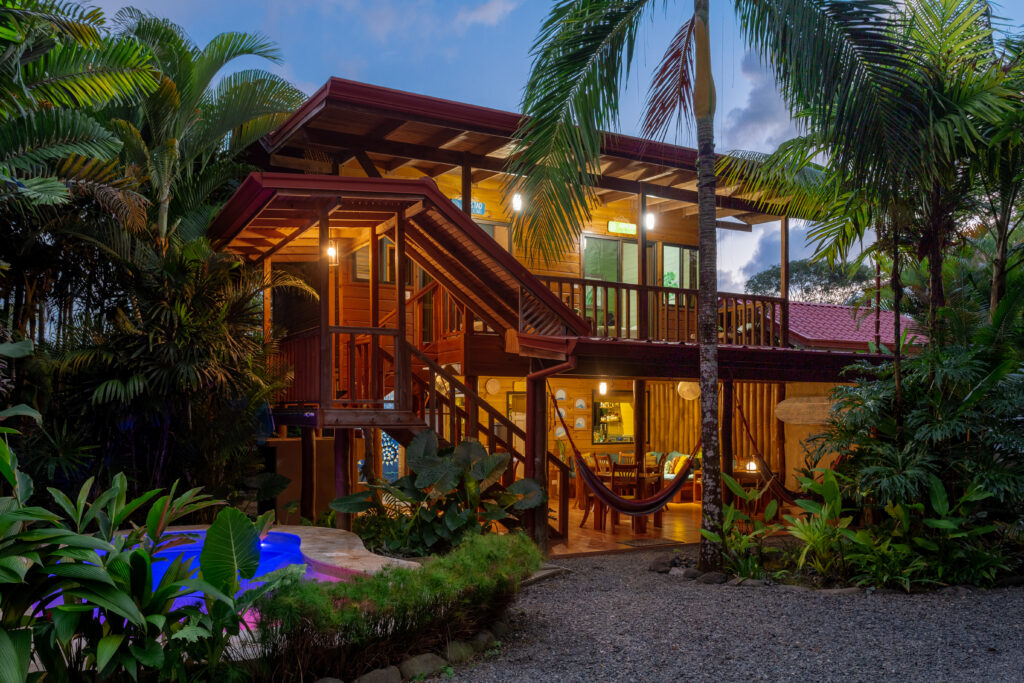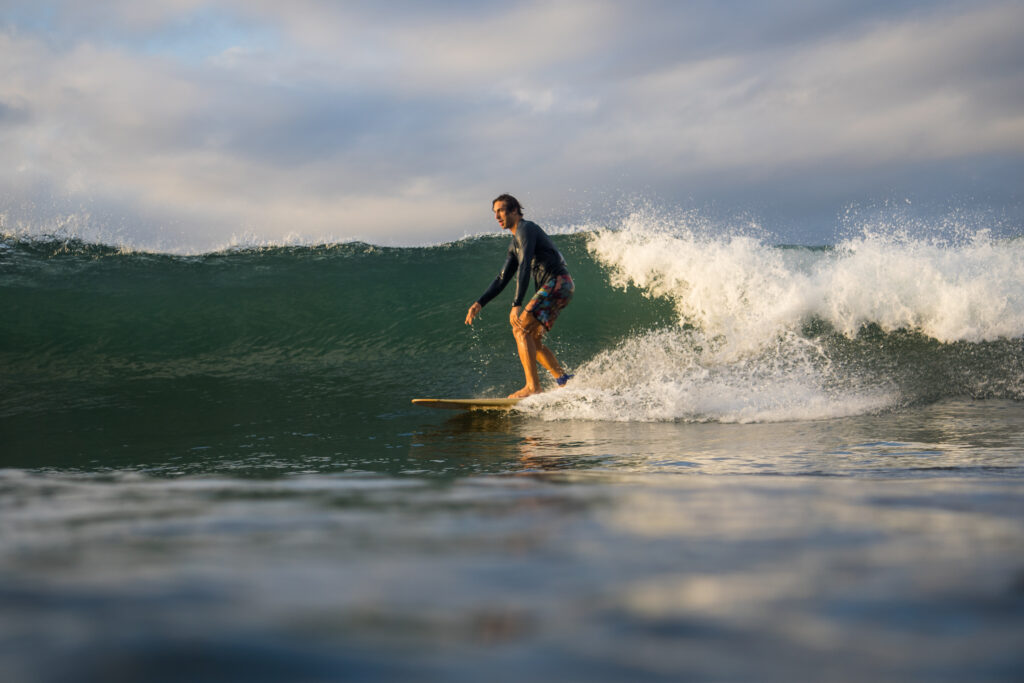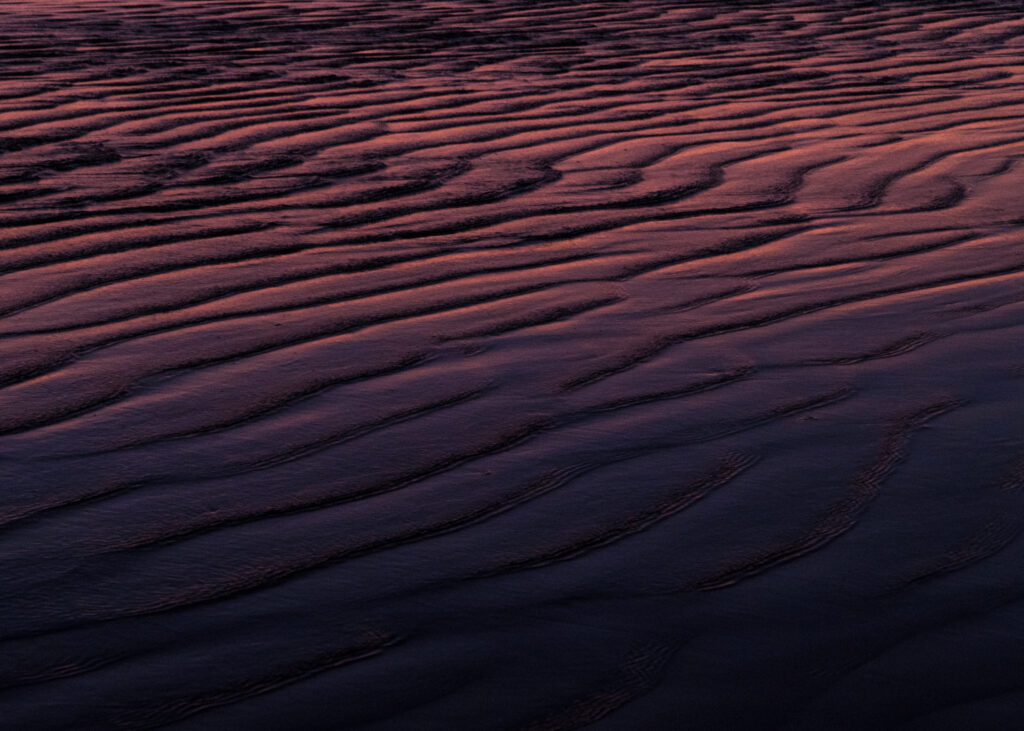Ocean Surfing: Understanding the Different Types of Ocean Waves
For those of us who are surfers and enjoy frolicking in one of nature’s most epic playgrounds, the ocean and its waves are both incredibly fascinating and extremely important. Yet for anyone who is a prospective surfer, ocean/nature lover, or curious individual, you may wonder: what are ocean waves, and how exactly do they form?
In this blog, we aim to explain a little more about what ocean waves are, how they form, and the different types of waves, all from the perspective of a current or future surfer. Finally, we will explain a little about the waves here in our area — Costa Ballena, Costa Rica — and what makes it such an ideal place to learn how to surf.
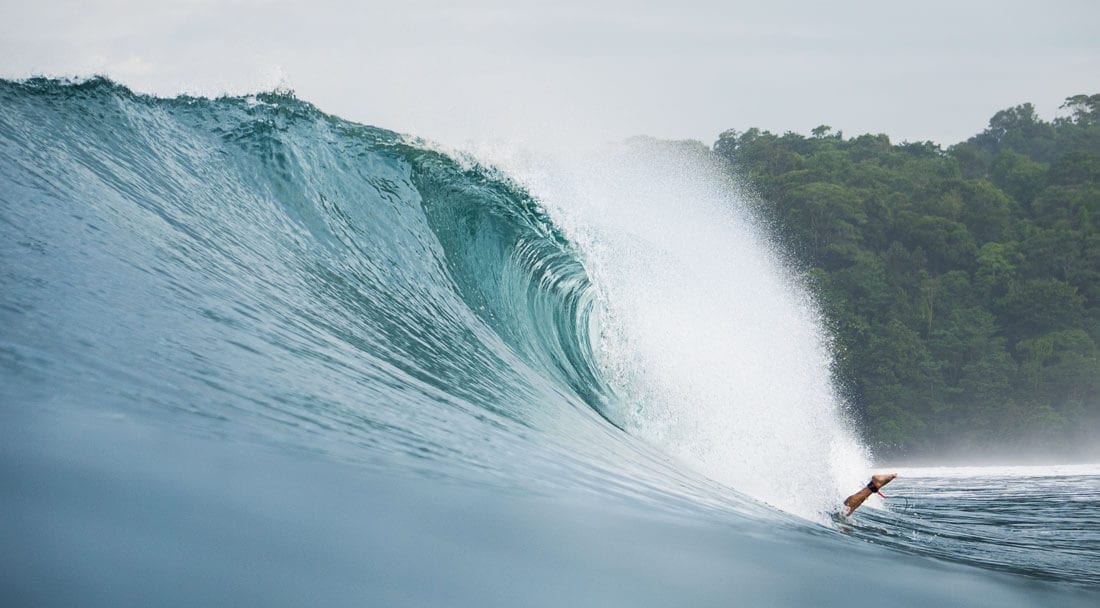
How ocean waves are formed
Ocean waves have long been a source of intrigue, myth, and wonder. From the Greek mythologies of Benthesikyme and Cymopoleia, the goddess of waves, to the Polynesian legend of Tangaroa, god of the seas, people have felt the power of a wave and attributed it to supernatural causes. The truth is much more scientific but just as fascinating.
Waves are formed by energy that has traveled through the water in a circular motion.
According to the National Oceanic and Atmospheric Association (NOAA) when there is a storm over the middle of the ocean, winds push against the surface of the water “creating a disturbance that steadily builds as wind continues to blow and the wave crest rises.” And if we remember Newton’s Laws, energy cannot be created or destroyed, so the power of the wave travels hundreds to thousands of miles until it reaches a coast.
The waves that we see crashing on the shore — the ones that surfers worldwide chase — result from this circular energy movement disturbed by the ocean floor. As the bottom portion of the energy rotation hits the ocean floor, it slows down, which forces the water up into a steeper shape until, eventually, the wave reaches its breaking point, which is when we catch it and ride it — allowing all that beautiful energy to flow through the surfer.
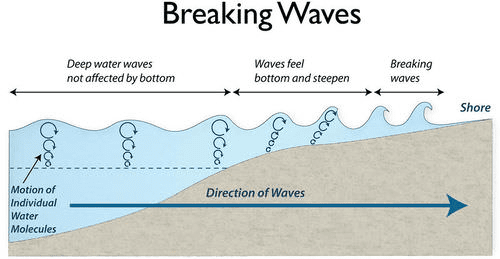
The anatomy of an ocean wave
Reading the waves is one of the most significant skills you learn by surfing. When learning how to surf and sitting in the “lineup” (out past the breaking waves), you constantly watch the horizon and anticipate where you should be to catch that next great wave. One of the ways you can do this is to learn about the anatomy of a wave.
An excellent graphic created by the San Diego Surf School explains every part of a breaking, surfable wave from the peak to the trough.
Beginner surfers usually learn in the “shallow end” and on whitewater waves (already broken) to practice their pop-ups and get comfortable with their equipment. More advanced surfers will paddle out to the “green waves” (the unbroken ones) and try to catch them right before they break. This allows the surfer a longer ride on the “face” of the wave with the highest velocity. When the conditions are correct on certain waves, the most advanced surfers can position themselves in the barrel or the tube and ride within the tunnel of water that forms. “Getting barreled” is an incredibly sought-after experience for any surfer.
Reading waves
As you learn to surf, knowing the different parts of the wave allows you to anticipate where to paddle out to catch it in the correct position and how exactly you want to ride it. Ideally, a surfer can read where the peak will form, then angle themselves to catch the wave on a slight diagonal, either right or left (depending on how the wave breaks), to maintain their position on the face. This is a somewhat intuitive experience, but background knowledge helps understand the why.
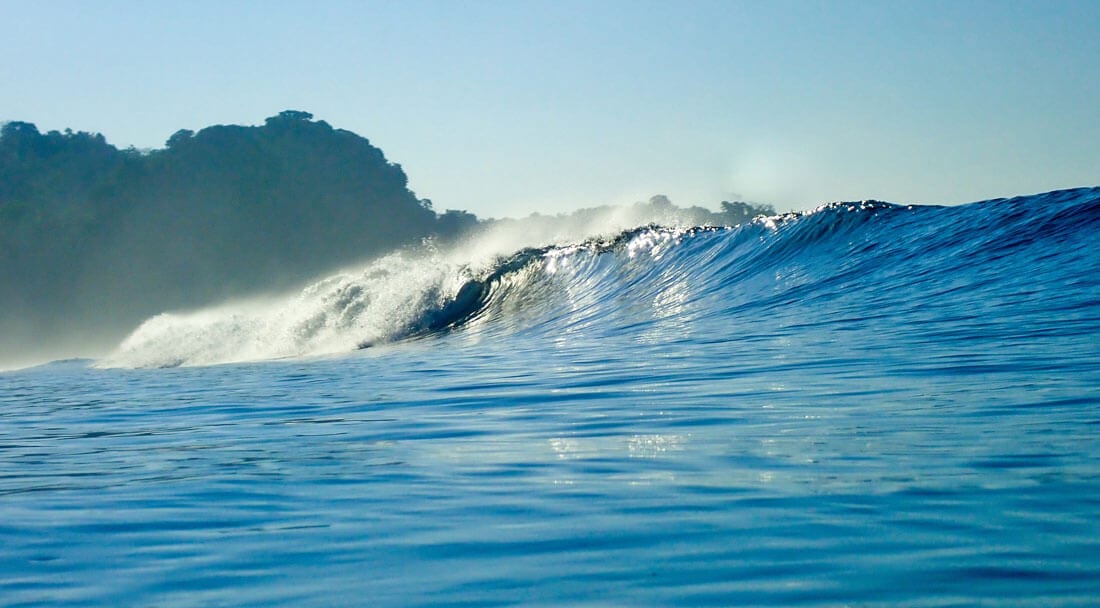
The three types of wave breaks: beach, reef, and point
Now, as some of you may have guessed, not all waves are created equal. In general, there are three different types of waves, and we distinguish them based on the obstruction on the ocean floor that causes the wave to break.
Beach break
A beach break is a wave that breaks over sand. These are typically the most consistent waves and usually the best for beginners because the seafloor is softer and safer. While the waves of a beach break are traditionally consistent, as long as there is swell, there is almost always some surfable wave; they are also ever-changing. The sandy ocean floor is dynamic, shifting with the currents and tides. So a beach break means that sometimes the waves peel left, sometimes right, sometimes huge, and occasionally super mellow.
The largest registered wave in the world is located off the coast of Nazare, Portugal, and is a beach break. So is our lovely hometown break in Uvita, Costa Rica, where we surf at Bodhi Surf + Yoga. Two very different waves but created from the same physics.
Another dangerous type of break is a “shore break,” when a wave breaks directly onto shore. This happens often when the bottom of the seafloor transitions quickly from deep to shallow.
Reef break
A reef break is — you guessed it! — is a wave that breaks over a coral reef (or any other fixed object on the bottom of the sea floor like rocks). Waves that crash over reefs or rocks are almost machine-like. Because the seafloor is fixed, the waves crash in nearly the same way over and over. The changing tides and the direction of the swell are the changing factors of a reef break. Reef breaks are also notoriously more dangerous in the surfing world. The waves crash over a rocky and sharp bottom, and usually, the water is relatively shallow. If you plan to surf at a reef break, know the safety precautions and always talk to the locals first!
One of the most famous waves in the world is a reef break: Teahupo’o. Teahupo’o (properly pronounced “tay-hoo-poh-oh” but often referred to as “cho-poo”) is off the coast of Tahiti and forms huge, beautiful tubes that advanced surfers from around the world flock to.
Point break
A point break is a wave that breaks from a point, usually into some bay or beach break. This can be a point where the shoreline juts or extends out into the sea, or it can also be an underwater rock or reef formation. Point breaks can create very long, reliable waves that always peel in the same direction off the point. They are very steady because they break in the same place, and the conditions that create a point break do not change much. Point breaks also produce some of the longest rides in surfing, but since they usually only have one take-off point and travel in one direction, you may have to get in line and wait your turn to catch a wave.
Some famous point break waves are Jeffery’s Bay, South Africa, and Chicama in Peru.
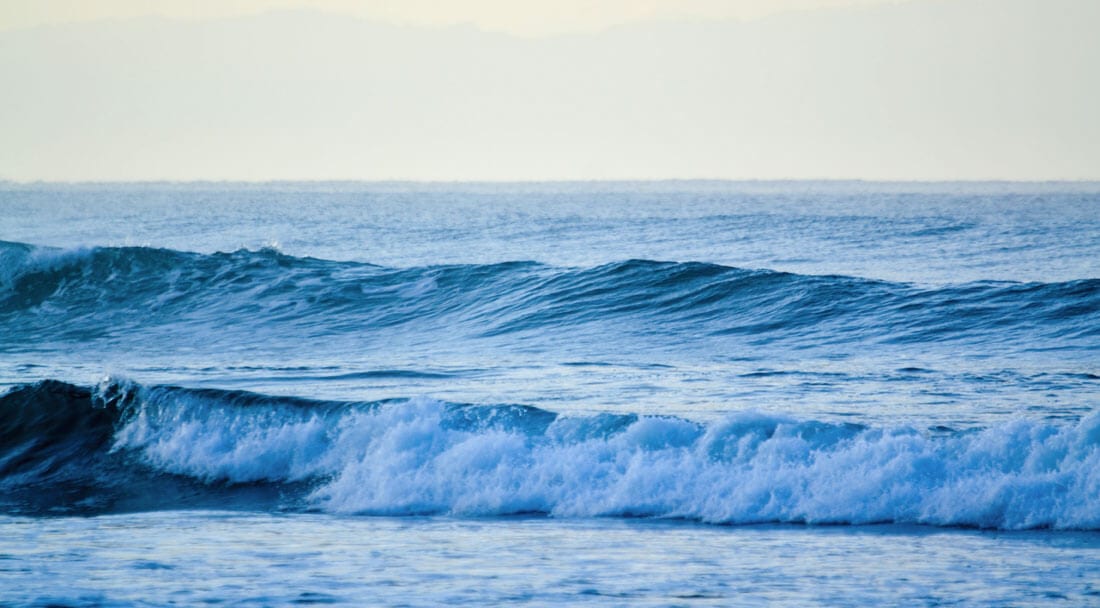
Exploring the different forms of breaking waves
So, when you are out in the lineup and see a wave coming towards you, there are a few different things to be aware of. Reading waves takes both patience and practice. No two waves are the same, no matter how well you know the area and its tendencies. But, according to oceanography studies, there are three breaking waves: surging, spilling, and plunging.
- Surging breakers are waves that don’t have much shape to them. They build up and slide along the beach, not creating much foam or spray.
- Spilling breakers have more shape, but they do not curl. The water approaches a gently sloping ocean floor, and the wave foams at the peak but does not create a crashing wave. It builds and then loses energy as white water spills from the crest down the front of the wave.
- Plunging waves, on the other hand, have more energy as they approach the shore, and a well-defined curl forms as the wave falls. You may imagine this as the quintessential surfing wave: “The tube that forms as these waves hit the shore at an angle and progress across the shoreline is what surfers love.”
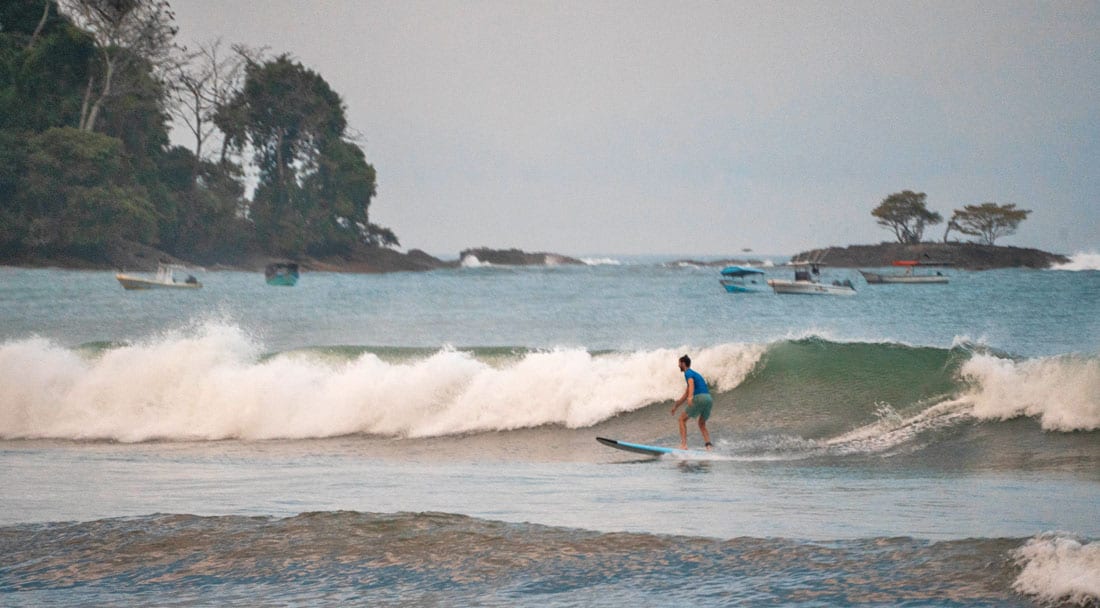
Some of the waves near Bodhi Surf + Yoga in Uvita, Costa Rica
At Bodhi Surf + Yoga, we are incredibly fortunate to have consistent, year-round waves where we live that we can take advantage of for all of our surfing needs!
Playa Colonia (or Playa Chaman)
We do the vast majority of our surf lessons in the Marino Ballena National Park at what we call Playa Colonia or Playa Chaman. This is a beach break that has a sandy and very gradually inclining seafloor, which, for the most part, makes for soft and slow-breaking waves. Even if the waves are very large (too large to paddle out into the lineup), we can always take advantage of the whitewater waves or the waves that reform (turn from whitewater back into smaller, unbroken “green” waves as they continue traveling to shore).
Playa Hermosa de Osa
In addition to that, we sometimes take our guests to Playa Hermosa, another beach break just north of us (and the Whale Tail). This beach break has waves that break a bit faster and more tubular than in the park, but this can be good for our bodysurfing needs or if the waves are tiny and the guests are a bit more advanced.
Playa Dominicalito
Nearby, we also have a surf spot called Dominicalito, which we sometimes take our guests to if the swell is huge and they are ready to paddle into the lineup. This is a combination of a reef and beach break. It is appropriate because it is located within a small bay, which is more protected from the larger swells that sometimes hit our coastline.
We feel lucky to have a variety of surf spots within a 15-minute drive that is appropriate for our guests, who generally visit us as beginners or intermediate surfers. From a surfer’s perspective, they do not call it the “rich coast” for no reason!
We hope you enjoyed this explanation of waves and that you find yourself frolicking in them sometime soon!
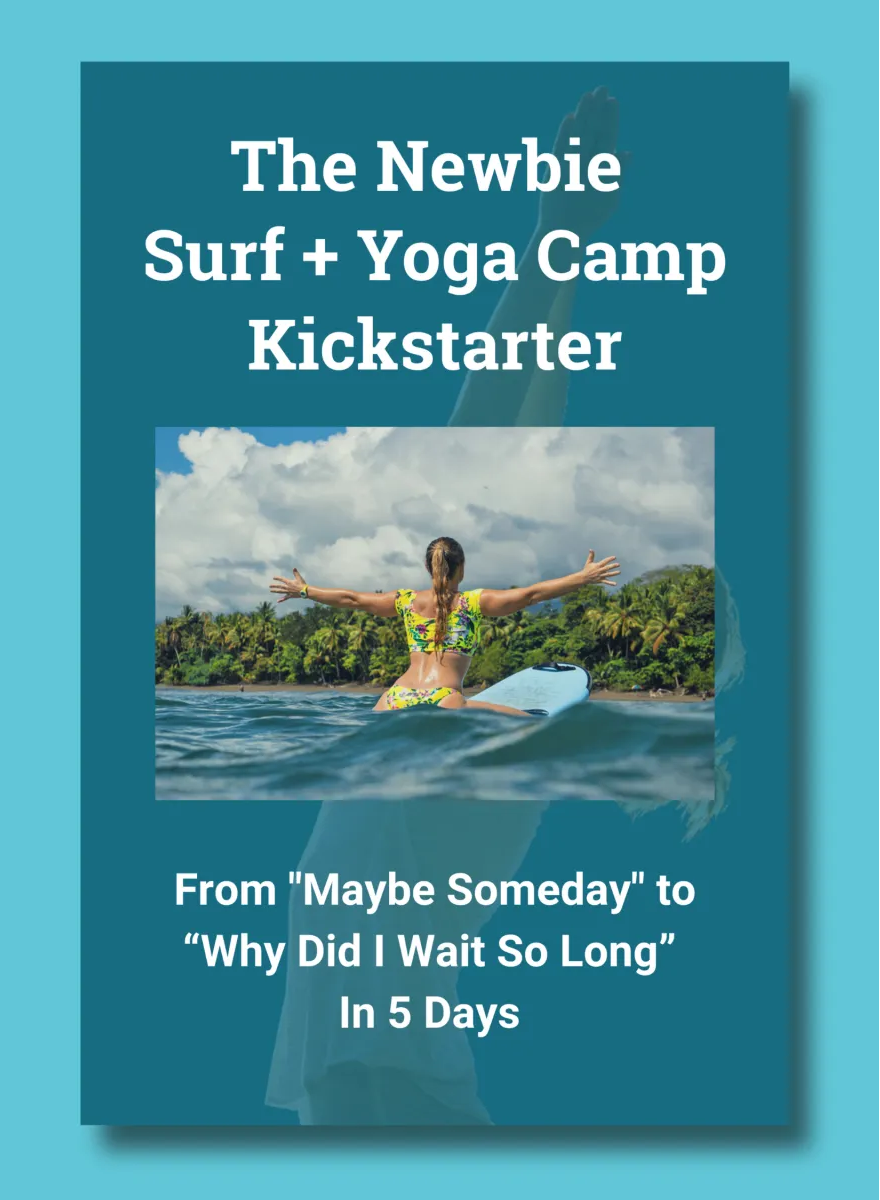
For First-Time Surfers
You Don't Need Experience. You Don't Need Gear. You Just Need This.
Our free 5-day email course that reveals the 5 myths keeping beginners at "I'm not ready" instead of catching their first wave and finding inner peace-and how to overcome them fast.
Change the heading on the Separator tab ->
Search
The Newbie Surf + Yoga Camp Kickstarter
Bust the 5 biggest myths about going to a surf and yoga camp so you can stop procrastinating and start catching waves - with our FREE 5-day email course.
Change the heading on the Separator tab ->
Most Read Blogs
What is the Meaning of Anjali Mudra?
May 27, 2020
Fitness for Surfers: Workouts, Exercises & Training
February 10, 2022
The Best Places to Eat in Uvita, Costa Rica
May 19, 2022
How to Get From SJO to Costa Ballena, Costa Rica
May 31, 2018
Change the heading on the Separator tab ->
Categories
Categories
- Bodysurfing (5)
- Food (7)
- Responsible Business (6)
- Surfing (66)
- Travel (65)
- Yoga (43)
Change the heading on the Separator tab ->
Newsletter
Thanks for subscribing! Please check your email for further instructions.
Change the heading on the Separator tab ->
Follow Us
Bodhi Surf + Yoga
Change the heading on the Separator tab ->
Read more
5 Reasons Why a Surf + Yoga Retreat Should Be Your Next Big Bucket List Adventure
Words by Travis
If you’re reading this, chances are you’re experiencing a little restlessness. You’ve scrolled past the passive beach vacations and you know, deep down, that your next trip needs to be different. It…
Small Things That Make A Big Difference to Progressing Your Surfing
Words by Guest Post
Welcome to the first of our three-part series covering the small things that make a big difference to your surfing! You are most likely reading this because you’ve taken some surf lessons…
Sandbars for Surfers: Everything You Need to Know and More
Words by Guest Post
Ever wonder what a sandbar is? When it’s low tide you can see them, but what happens when the ocean covers them? Most surfers may just look at the waves on the…

